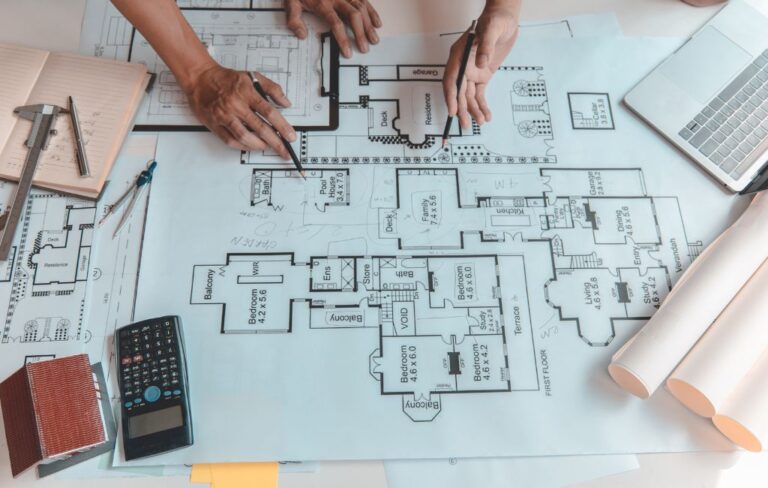
Architect Wonders: Crafting Functional Art
Architect Wonders: Crafting Functional
Architecture stands at the intersection of art and functionality, creating spaces that are not only visually stunning but also serve practical purposes. This article explores some of the most remarkable architectural wonders around the globe, highlighting how they blend aesthetic appeal with utility.
The Essence of Architectural Wonders
Architectural wonders are more than just buildings; they are symbols of human ingenuity and creativity. These structures often become landmarks, representing the cultural and historical essence of their locations. They push the boundaries of design and engineering, offering new perspectives on what is possible in construction.
Defining Characteristics
- Innovative design
- Structural integrity
- Functional utility
- Cultural significance
Iconic Examples of Architectural Wonders
Several structures around the world exemplify the concept of architectural wonders. These buildings not only captivate with their beauty but also serve specific functions that enhance their surroundings.
The Eiffel Tower, Paris
The Eiffel Tower, designed by Gustave Eiffel, is an iconic symbol of Paris. Completed in 1889, it was initially criticized for its design but has since become one of the most recognizable structures globally. Standing at 324 meters, it serves as a radio transmission tower and a tourist attraction, drawing millions of visitors annually.
Burj Khalifa, Dubai
The Burj Khalifa in Dubai is the tallest building in the world, standing at 828 meters. Designed by Adrian Smith of Skidmore, Owings & Merrill, it features a unique Y-shaped floor plan that maximizes views of the Persian Gulf. The building houses residential units, corporate suites, and the Armani Hotel, showcasing a blend of luxury and functionality.
Sydney Opera House, Australia
The Sydney Opera House, designed by Jørn Utzon, is a masterpiece of modern architecture. Its distinctive sail-like design has made it a symbol of Australia. The structure hosts over 1,500 performances annually, ranging from opera to contemporary music, making it a hub of cultural activity.
Case Studies: Blending Art and Functionality
Examining specific case studies can provide deeper insights into how architectural wonders achieve a balance between aesthetics and utility.
Fallingwater, Pennsylvania
Designed by Frank Lloyd Wright, Fallingwater is a prime example of organic architecture. Built over a waterfall, the house integrates seamlessly with its natural surroundings. Wright’s design philosophy emphasized harmony between human habitation and the environment, making Fallingwater a functional piece of art.
The Guggenheim Museum, Bilbao
Frank Gehry’s design for the Guggenheim Museum in Bilbao is a testament to the transformative power of architecture. The museum’s undulating titanium curves have revitalized the city, attracting millions of tourists and boosting the local economy. Inside, the museum houses contemporary art, blending form and function in a unique way.
Statistics and Impact
Architectural wonders often have a significant impact on their surroundings, both economically and culturally. Here are some statistics that highlight their influence:
- The Eiffel Tower attracts approximately 7 million visitors annually, generating substantial revenue for Paris.
- The Burj Khalifa’s observation deck alone draws over 1.87 million visitors each year.
- The Sydney Opera House contributes over $775 million to the Australian economy annually.
- The Guggenheim Museum in Bilbao has attracted over 20 million visitors since its opening in 1997, significantly boosting the local economy.
Future Trends in Architectural Wonders
The future of architectural wonders lies in sustainable and smart design. As technology advances, architects are exploring new materials and construction methods to create buildings that are not only beautiful but also environmentally friendly.
Green Architecture
Green architecture focuses on sustainability, using eco-friendly materials and energy-efficient designs. Buildings like the Bosco Verticale in Milan, which features vertical forests, are leading the way in this trend.
Smart Buildings
Smart buildings integrate advanced technologies to enhance functionality and efficiency. The Edge in Amsterdam, often cited as the smartest building in the world, uses IoT devices to optimize energy use and improve the user experience.
Conclusion
Architectural wonders are a testament to human creativity and innovation. They blend art and functionality, creating spaces that inspire and serve practical purposes. From the Eiffel Tower to the Burj Khalifa, these structures captivate the imagination and stand as symbols of what is possible in architecture. As we look to the future, sustainable and smart design will continue to shape the landscape of architectural wonders, pushing the boundaries of what can be achieved.